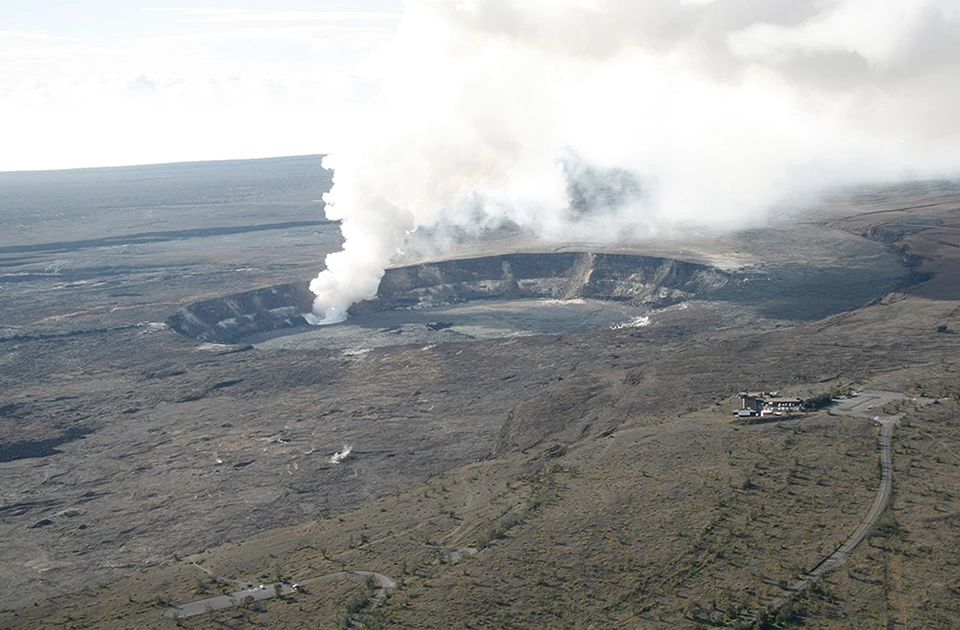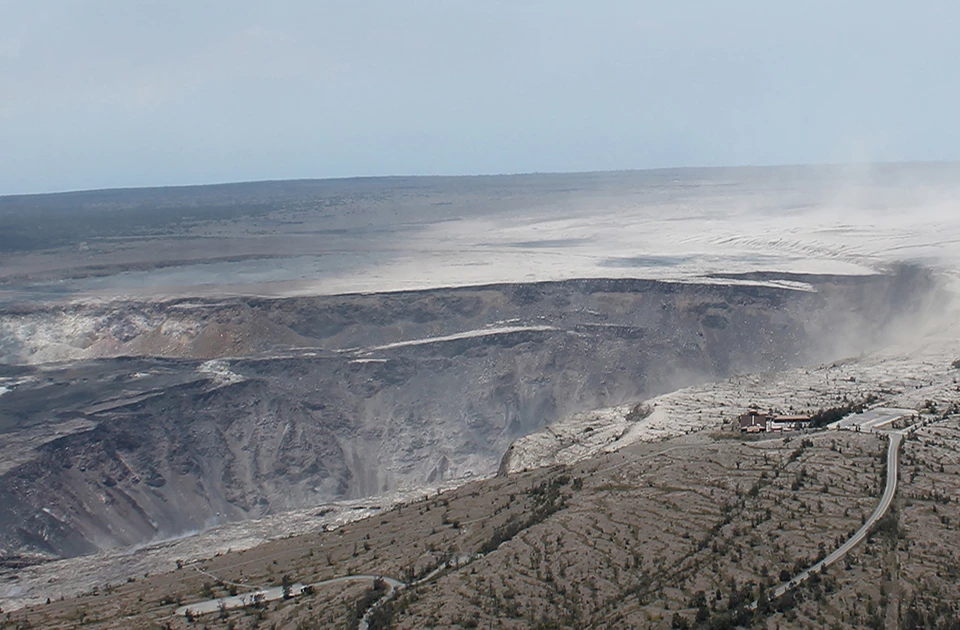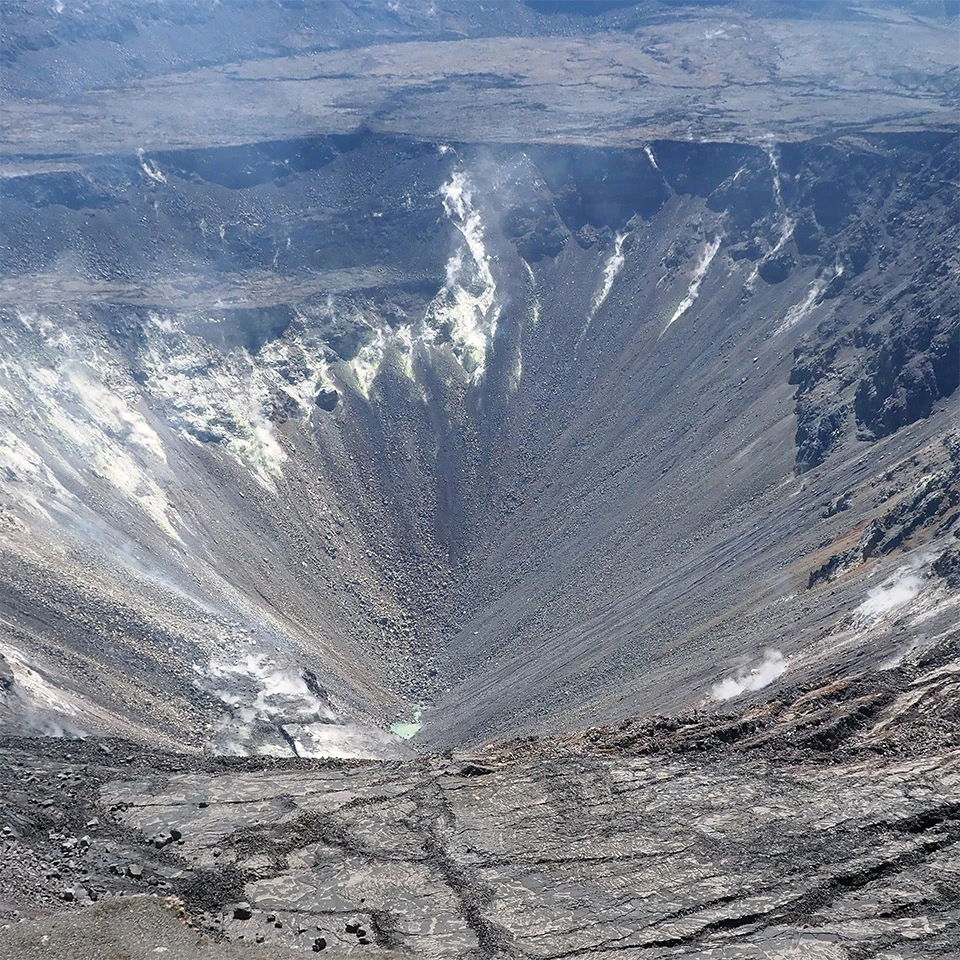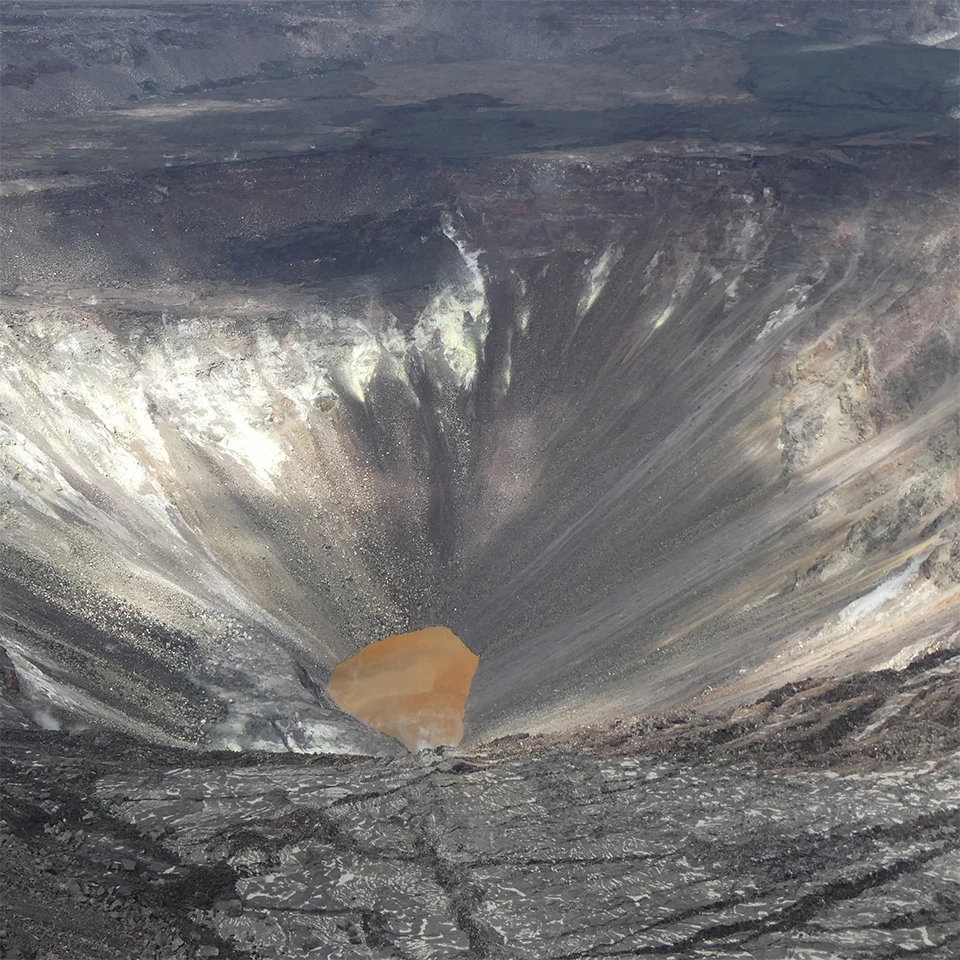Last updated: December 27, 2022
Article
Three Big Changes in Three Years at Halemaʻumaʻu Crater

Kīlauea volcano is one of the most dynamic landscapes on Earth. As one of the most active volcanoes on the planet, it is constantly reshaping itself. Yet even by its own standards, 2018, 2019, and 2020 have been remarkable for the changes that have taken place at Halemaʻumaʻu crater, the traditional home of the volcanic deity Pelehonuamea.
2018: Summit Collapse
In the first days of May 2018, the lava lake that had existed in Halemaʻumaʻu crater for almost a decade began to drain away. Magma moved from the summit of Kīlauea to the Lower East Rift Zone, marked by a series of earthquakes. On May 3rd, the first fissures opened up in the subdivision of Leilani Estates and the massive eruption of 2018 began to unfold in lower Puna.With less magma left to support the summit, Halemaʻumaʻu crater began to collapse. Every 28 hours on average, the ground within the summit caldera of Kīlauea sank with dramatic collapse events. By the end of the 2018 eruption, Halemaʻumaʻu crater had sunk by 1,600 feet (488m), and its diameter more than doubled. Read more about the 2018 eruption and summit collapse.
Kīlauea Summit - Before & After Collapse


Left image
Kīlauea summit on November 28, 2008
Credit: Photo courtesy USGS - Hawaiian Volcano Observatory
Right image
Kīlauea summit on August 1, 2018
Credit: Photo courtesy USGS - Hawaiian Volcano Observatory
2019: Development of a Water Lake
On August 1, 2019, USGS Hawaiian Volcano Observatory (HVO) scientists confirmed a growing pond of water in the recently enlarged Halemʻumaʻu crater. Initially, it appeared as small, separate turquoise ponds. Over time, however, the small ponds united and began to grow dramatically. For a period of time, the depth of the growing lake was increasing several inches per day.It was a remarkable turn of events. In the space of just over one year, a persistent lake of lava had vanished in a dramatic collapse, only to be replaced by the first lake of water to be recorded at Kīlauea in modern history.
Over its lifespan, the lake grew to be approximately 160 feet (49 m) deep. A ten-story building could have disappeared into its depths. The lake also changed color due to the precipitation of iron-sulfate minerals and SO2 being dissolved into the water. Learn more about the summit water lake that was present.
Growth of the Water Lake in Halemaʻumaʻu


Left image
Halemaʻumaʻu Crater on August 7th, 2019 (USGS/D. Swanson)
Right image
Halemaʻumaʻu Crater on April 21st, 2020 (USGS/M. Patrick)
2020: Lava Returns
But shortly after approximately 9:30 p.m. on December 20, 2020 the USGS Hawaiian Volcano Observatory (HVO) detected a glow within Halemaʻumaʻu. The water lake that had existed since 2019 was soon vaporized as an effusive eruption commenced and lava cascaded into the crater.
Wthin one week, what had been a history-making lake of water was replaced by a nearly 600-foot deep lake of lava. See images and videos from the 2020 summit eruption.
Transition From a Water Lake to Lava Lake in Halemaʻumaʻu


Left image
Water Lake on December 20, 2020
Credit: USGS Hawaiian Volcano Observatory
Right image
Lava Lake on December 24, 2020
Credit: USGS Hawaiian Volcano Observatory
